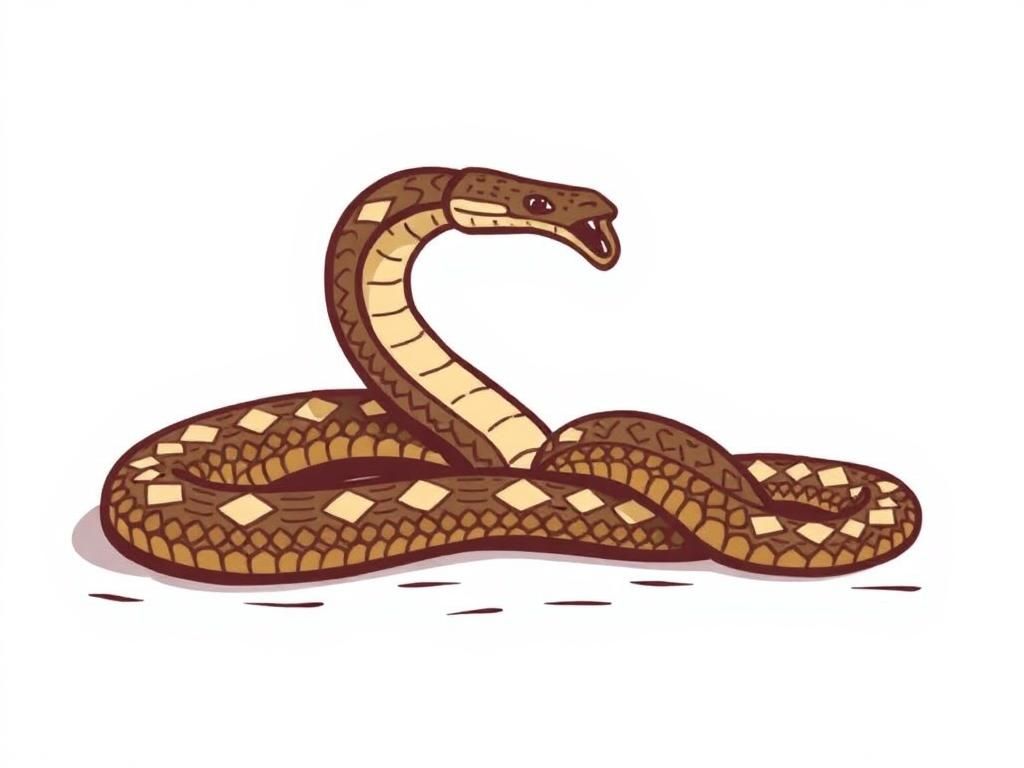Snakes have captivated human imagination throughout history, embodying a range of symbolic meanings that vary widely across different cultures. From being revered as divine entities to viewed with suspicion and fear, the symbolic meaning of snakes is profoundly multifaceted. This article delves into the historical context, common interpretations, cultural variations, and modern perspectives surrounding the rich symbolism of snakes in various societies.
Historical Context of Snake Symbolism
Ancient Civilizations
Within ancient cultures, the symbolic meaning of snakes often intertwined with mythology, spirituality, and societal values.
Egyptian Culture
In Egypt, the snake was a potent symbol in mythology, especially embodied by Wadjet, the cobra goddess. She signified protection and royalty, often portrayed on the crowns of pharaohs to symbolize their divine authority. The connection between the snake and royalty illustrated societal reverence for this creature, making it a potent emblem of both power and safety.
Greek Mythology
The Greeks viewed snakes as symbols of healing, embodied by Asclepius, the god of medicine. His staff, entwined with snakes, represents the duality of medicine’s potential for both healing and harm. The profound connection between snakes and healing led to the widespread adoption of the caduceus symbol in modern medicine, emphasizing the continuity of the symbolic meaning of snakes in health-related contexts.
Indian Culture
In Indian traditions, snakes, or Nagas, play a crucial role within both Hinduism and Buddhism. They symbolize fertility, sexuality, and the cyclical nature of life. The portrayal of Nagas as protectors of the earth further emphasizes their importance in spiritual narratives, making them integral to understanding the symbolic meaning of snakes in Indian culture.
Religious Interpretations
Different religions offer their interpretations of snake symbolism, reflecting their unique worldviews and theological concepts.
Christianity
In Christian theology, the serpent in the Garden of Eden represents temptation and evil, illustrating humanity’s fall from grace. This portrayal has greatly influenced the negative connotations associated with snakes in Western culture, overshadowing other potential meanings.
Judaism
Conversely, Judaism presents a more nuanced view, seeing the serpent as a symbol of wisdom and eternity. The biblical narrative underscores the complexity of snake symbolism, suggesting that its meanings can shift based on context and interpretation.
Indigenous Beliefs
Indigenous cultures often embrace different perspectives on snakes, viewing them as ancestral spirits and symbols of a deep connection to nature. Tribal myths frequently highlight snakes as vital elements in the creation stories, linking them to the earth and its cycles.
Common Symbolic Meanings Associated with Snakes
Transformation and Rebirth
The theme of transformation permeates the symbolic meaning of snakes, with shedding skin serving as a tangible metaphor for renewal and change.
Shedding Skin
As snakes shed their skin, they undergo a form of renewal, symbolizing personal growth and life cycles. This process parallels human experiences of change, resilience, and rebirth, reinforcing the idea that transformation is both essential and natural.
Mythical Associations
In various mythologies, snakes are depicted as guides during transformative journeys. For instance, Quetzalcoatl, the Mesoamerican feathered serpent, embodies the idea of duality and transformation, representing both earth and sky, as well as life and death. Such figures reveal the deep-seated connections between snakes and the human experience of change.

Duality of Good and Evil
The perception of snakes also embodies the duality of good and evil, reflecting humanity’s inherent fears and desires for understanding.
Representing Fear and Power
Snakes elicit fear in many cultures, with this primal response linked to their mysterious nature and potential danger. However, in various cultures, they also symbolize power and protection. For example, some tribes revere snakes, considering them guardians against malevolent forces.
Balance of Light and Darkness
This intricate balance of light and darkness within the symbolic meaning of snakes mirrors the human struggle to understand the complexities of existence. Mythologies often depict snakes as mediators between realms, showcasing their dual identities and the necessity of balance.
Healing and Medicine
The healing aspect of snakes is a prominent theme, particularly in medical symbolism, where their imagery embodies both medicinal benefits and historical associations.
Symbol of Healing
As symbols of healing, snakes have a profound connection with pharmacology and the natural world. Their venom, while dangerous, has also been utilized in medical treatments, extending the snake’s dual symbolism of harm and healing.
Caduceus Mistaken Identity
It is essential to understand the confusion surrounding the caduceus symbol, often misidentifying it as the emblem of medicine. In reality, the caduceus features two snakes and reflects trade and negotiation rather than health—a mistake that emphasizes the evolving interpretations of the symbolic meaning of snakes.
Cultural Variations in Snake Symbolism
Western Cultures
In Western cultures, snake symbolism often leans towards more negative connotations influenced by biblical narratives and folklore.
Snakes in Folklore and Literature
Snakes have appeared in numerous literary works and folktales, often embodying deceit or treachery. However, there are also instances where they symbolize wisdom, emphasizing the complexities of the symbolic meaning of snakes in Western discourse.
Contemporary Views on Snakes and Their Depiction
Today, snakes are frequently depicted in film and media, evoking fear or fascination. Their portrayal has evolved, with some contemporary narratives exploring the more positive aspects, challenging traditional stigmas associated with these creatures.
Eastern Cultures
Eastern cultures often revere snakes, highlighting their sacred status and spiritual significance.
Reverence for Snakes in Hindu Temples
In India, snakes are worshipped in certain temples, seen as deities protecting against evil. The symbolic meaning of snakes showcases their revered position, highlighting the belief in their spiritual essence and protective qualities.

The Significance of Snake Deities and Their Worship
Many Eastern practices incorporate snakes as symbols of abundance and fertility, signifying their essential role in spiritual traditions and cultural narratives.
African Cultures
African perspectives on snakes encompass a blend of reverence, fear, and mythological significance.
Snakes as Ancestral Spirits
In many African cultures, snakes are considered ancestral spirits, possessing the power to connect the living with the deceased. This concept illustrates the deep spiritual ties that bind snakes to African traditional beliefs, emphasizing their role in the broader worldview.
Mythological Tales Involving Snakes
These narratives often contain moral lessons or cautionary tales, ensuring that the symbolic meaning of snakes persists in narratives handed down through generations, enriching the cultural fabric.
Modern Interpretations of Snake Symbolism
Psychological Perspectives
In contemporary society, snake symbolism often intersects with psychology, revealing both fears and subconscious connections.
Fear of Snakes (Ophidiophobia)
Ophidiophobia, or the fear of snakes, affects many individuals. Understanding this fear can shed light on the deeper anxieties surrounding life’s uncertainties and the human need for safety and predictability.
Snakes in Dreams: Interpretations and Meanings
Recurring dreams about snakes may symbolize repressed desires, fears, or the need for transformation in one’s life. Analyzing these dreams can provide insights into personal struggles and potential paths for growth.
Snakes in Popular Culture
From literature to film, the depiction of snakes in popular culture reflects societal perceptions and cultural narratives.
Symbolism in Films, Literature, and Art
The representation of snakes in various art forms often highlights their dual nature, embodying both beauty and danger. Films frequently use snakes as symbols to challenge heroes, representing moral dilemmas and the struggle between good and evil.
The Snake as an Anti-Hero or Villain Archetype
Many narratives feature snakes as anti-heroes or villains, reinforcing cautionary tales that remind audiences of the complexities of human nature. However, some modern interpretations challenge these stereotypes, offering fresh perspectives on the symbolic meaning of snakes.
Conclusion
The symbolic meaning of snakes is a rich and diverse tapestry woven through history, culture, and personal experience. Embracing the positive aspects of snake symbolism invites individuals to explore their transformation and deeper connections with nature. By understanding these multifaceted meanings, we can foster a more profound appreciation for snakes and their role in the human narrative.
References
- Campbell, Joseph. The Hero with a Thousand Faces. Princeton University Press.
- Chevalier, Jean, and Alain Gheerbrant. Dictionary of Symbols. Bloomsbury Publishing.
- Moore, R. (1996). “The Serpent in the Garden.” The Journal of Mythic Arts.
Additional Resources
- Documentary on Snake Symbolism
- Contact information for experts in mythology and symbolism can be found at your local university’s humanities department.
| Cultural Context | Symbolic Meaning | Key Mythological References |
|---|---|---|
| Egyptian | Protection and Royalty | Wadjet, Uraeus |
| Greek | Healing | Asclepius, Caduceus |
| Indian | Fertility, Sexuality | Nagas, Kundalini |
| Christianity | Temptation, Evil | Serpent in Eden |
| Indigenous | Connection to Earth | Various Tribal Myths |
FAQs
- What does the snake symbolize in different cultures?
Snakes symbolize various things, including wisdom, protection, transformation, and evil, depending on cultural context. - Why do snakes symbolize healing?
Their association with medicine, especially through the caduceus, highlights the duality of their nature—both harmful and beneficial. - How do snakes represent transformation?
Snakes shed their skin, symbolizing renewal and the natural cycles of life and growth. - What is the psychological impact of snakes on humans?
Many people experience ophidiophobia, or fear of snakes, which can symbolize deeper anxieties about the unknown. - Are there positive representations of snakes in popular culture?
Yes, modern narratives often explore snakes as complex characters, challenging traditional views of them as solely villains. - How do Eastern cultures view snakes?
Snakes are often revered as sacred beings representing abundance, fertility, and protection against evil forces.
